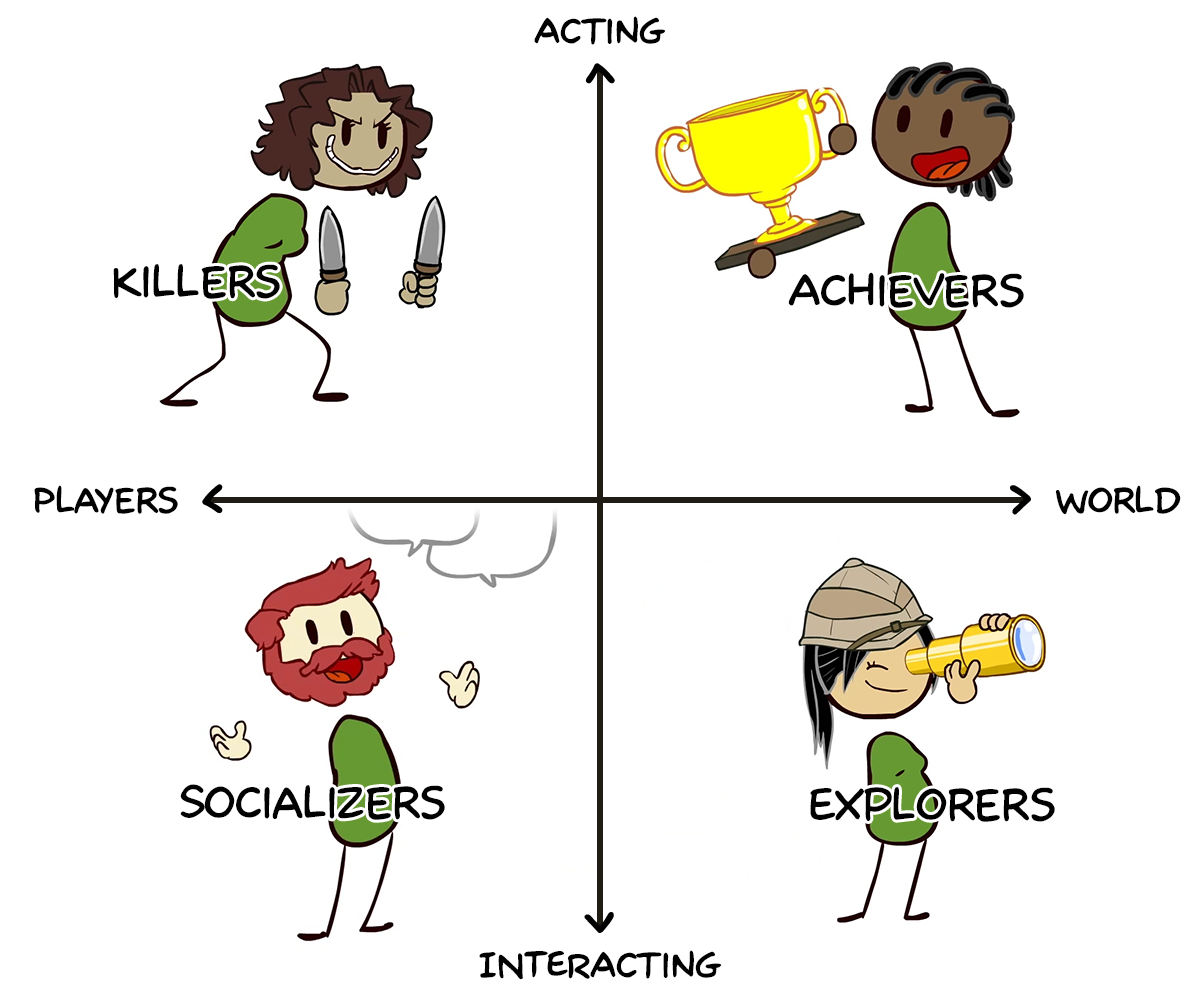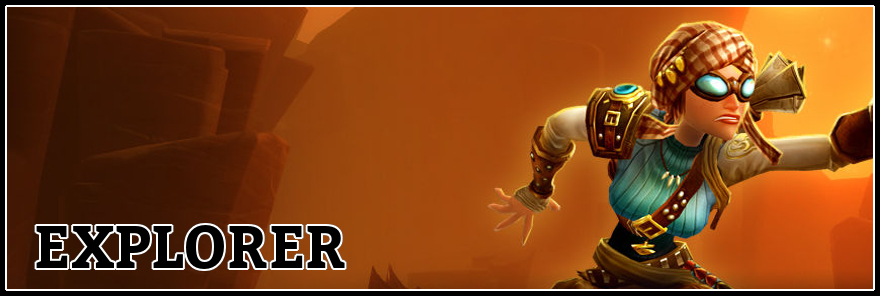The Mystic Media Blog is currently engaged in a series of articles examining each of the Bartle types and how to acquire, retain and monetize them according to their desires. Check out last week’s article on Explorers.

The Killer is the wild card of the Bartle Types. While both Achievers and Killers are competitive, Achievers compete with/through the game, whereas Killers compete with anyone or anything in their immediate vicinity. The Achiever wants to act upon the game according to the rules of gameplay, while the Killer just wants an immediate thrill. They derive pleasure from interfering with the functioning of the gameplay and/or the experience of other players. Like Internet “trolls”, Killers gleefully enact subversive behavior under the guise of their game persona. They aren’t interested in winning, socializing or exploring – they just want to provoke and impose themselves on the virtual world and its inhabitants.
Killers thrive on the experience of disrupting gameplay. Achievers represent the ultimate target since they are most antagonized by being killed. As a result, in multiplayer games, the more Achievers you have, the more Killers you’ll have, which may lead to a decrease in Achievers and overflow of Killers depending on the level of engagement of the gameplay. Explorers also represent easy prey for Killers, and if there are too many high level Killers, it may become hard for Explorers to explore. Socializers also make an appealing target for Killers in multiplayer games. Like Socializers, Killers are interested in interaction and influence. Some of the same retention tactics apply to both Bartle Types.
The best way to retain Killers is to give them opportunities to disrupt other players or the world of the game. In MMORPGs and shooters, it’s easy for them to find other players to kill. The challenge in single player games (especially single player mobile games) is how to appeal to a Bartle type that thrives on interaction. For one, Killers aren’t just into killing. Interfering with elements of the world will also appeal to them. For instance, if there are elements of the game world, such as crates or trees, which the user can crash into and destroy, it offers the same immediate thrill of interference as player elimination.
Games get creative to offer opportunities for world interaction. In The Legend of Zelda, beyond combat with enemies, Link can also famously antogonize “cuccos”, an element of the world. In Grand Theft Auto V, the ultimate game/franchise for Killers, users can not only kill civilians, but can bump into them for a humorous disruption. Offering cheat codes in single player games represents an opportunity for the Killer to expose and modify the game engine on the game developer’s terms. Pokemon GO employs battles in Pokegyms. Games like Candy Crush give Killers the thrill of destroying parts of the world. Killers love explosions. Giving them a tangible goal, like specific collectibles or targets that generate explosive reactions, will go a long way in retaining their interest.
In order for a Killer to spend money on a game, they must be engaged by the gameplay. Killers are looking for a specific type of satisfaction, a kind of schadenfreude. Retention methods are key since if a Killer doesn’t get satisfaction, they’ll move on quickly to something more immediate. Offering alternate game modes, such as low-gravity or disco mode, may entice Killers’ desire to subvert the game world. In multi-player games, extra weapons, stealth and any advantage in the killing department may tempt Killers to purchase if they are invested in the game.
As with appealing to any Bartle Type, everything begins with engaging gameplay. Thinking of these player types during the process of development will enrich your techniques and ultimately your final product.
Next week, in the final article of our series on Bartle Types, we’ll take a look at Socializers and the best methods for attaining, retaining and monetizing them.


